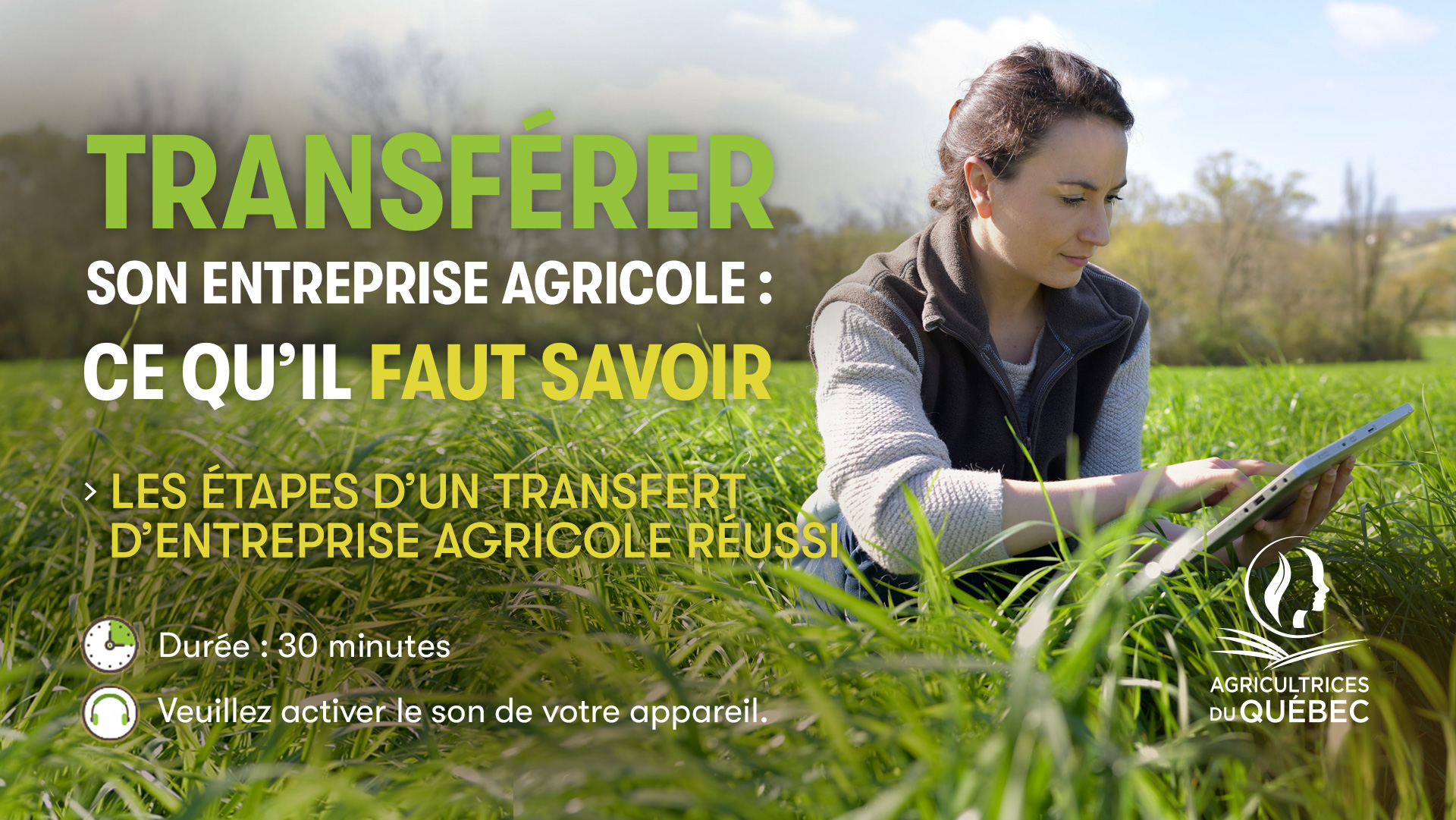Farm transfers in brief
In 2020, Quebec had 29,000 farms, compared to 38,000 in 1991. The agricultural population in Quebec is rapidly aging: it is estimated that 40% of producers will leave the profession between 2014 and 2024.
Historically, family farms have always been transferred from father to son in Quebec. To this day, this tendency still favours men.
To maintain a thriving agriculture sector, it is therefore a priority to raise awareness among farm owners around transfers to women. For this, we must debunk persisting beliefs and prejudices around women as business owners, spouses of producers and daughters-in-law in the farming community. Our organizations have a lot of work to do, as do the many suppliers and service providers.
Online interactive training in farm transfers
Learn more about farm transfers with our new interactive training program on transfers to women and the steps to prepare for a successful transfer!
This new interactive training program is divided into three modules, available by clicking the buttons below (in French only).
Module 1
In addition to giving an overview of farm ownership by women, Module 1 explains the concept of a farm transfer as an alternative to starting a farm, and the different types of transfers.
Module 2
Module 2 presents six fictional cases of women farmers facing prejudice, to raise awareness of existing stereotypes about women farm owners, and more specifically the obstacles women face in farm transfers.
Module 3
This final module covers the six steps in the transfer process, the key factors for success and a list of helpful resources.










